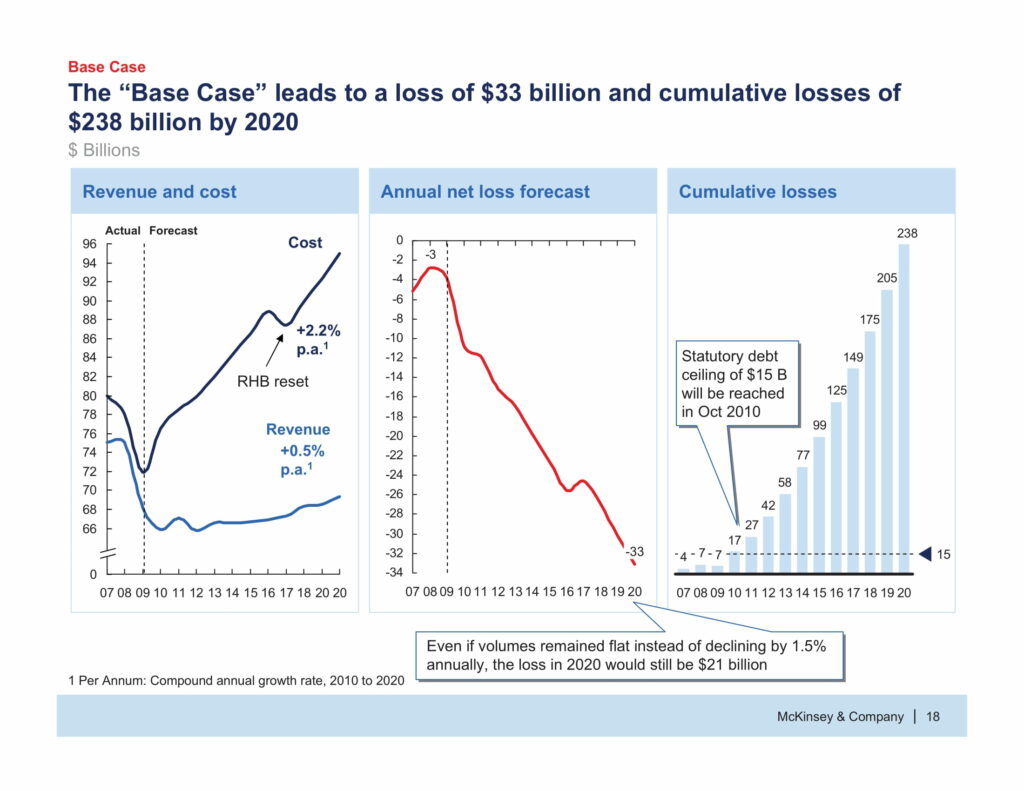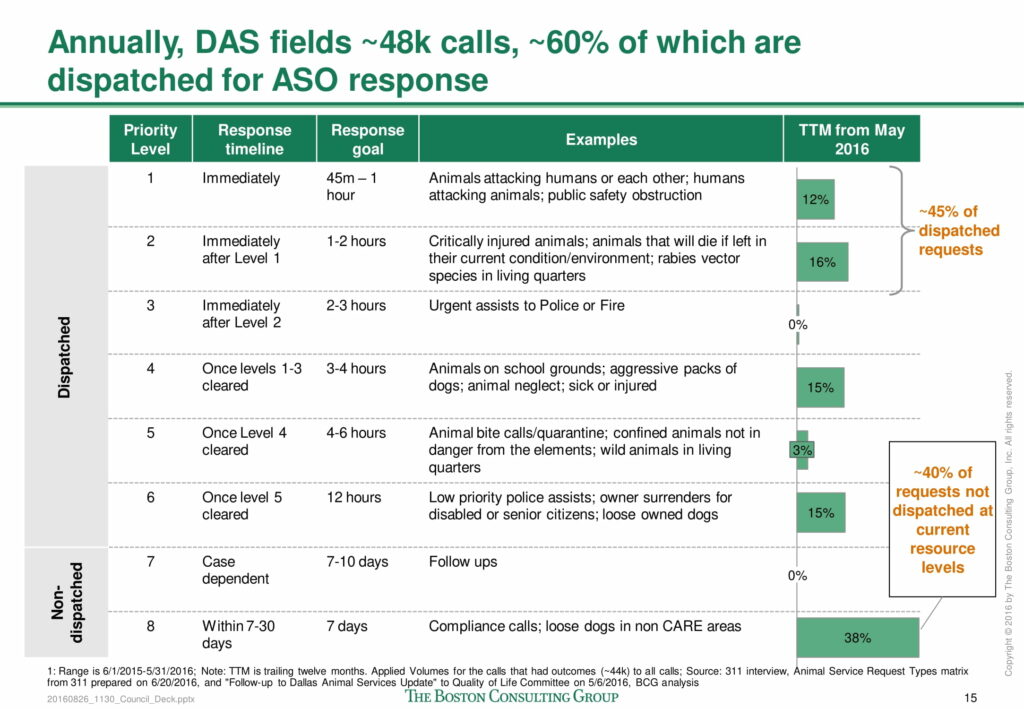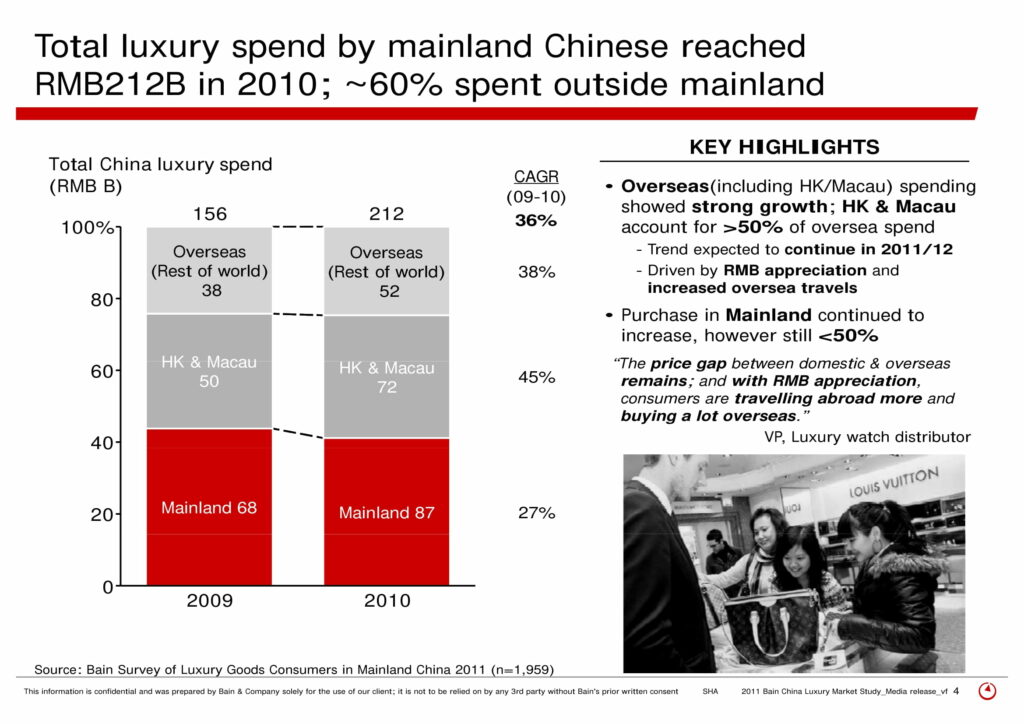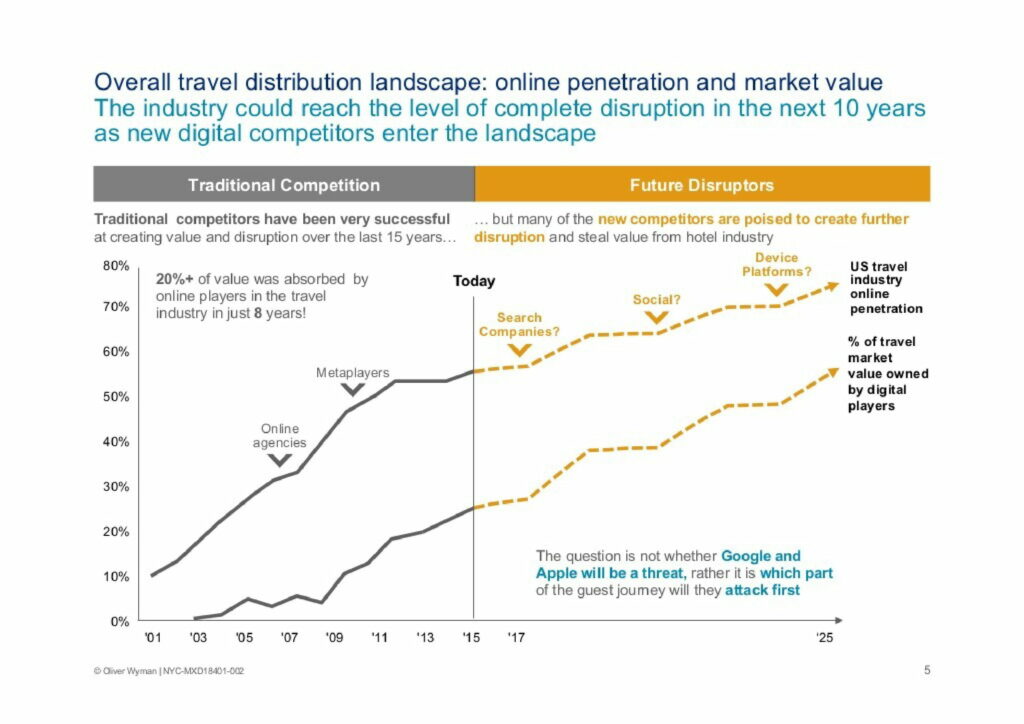What is an action title?
An action title is a slide title or lead-in that articulates the key implication or ‘so-what’ of the slide.
As a consultant, you’re often communicating with busy executives. Action title’s make your slides easier to understand, because your reader doesn’t have to dive into the detail of the slide body and try to uncover the key takeaway themselves.
Action titles compared to traditional titles
To make things clearer, let’s compare action titles with traditional slide titles.
An inexperienced Consultant or Business Analyst might build a slide that shows a company’s revenue and costs over time. They might label that slide:
“Overview of Revenue and Costs”
As a reader, you now have to study the charts and data in the slide body to uncover the so-what of the slide. And if you’re a busy executive, you really don’t have the time or inclination for that.
A more experienced Consultant would use an action title. It might look something like:
“Over the last 5 years, costs have grown 7% per year, which is double revenue growth”
As you can see, it’s much easier for the reader to understand exactly what you’re trying to communicate in your slide.
How do action titles link with the slide deck storyline?
So far, we’ve only talked about how action titles can be used to communicate the so-what of your individual slide. But let’s zoom out and consider your complete slide deck.
The purpose of your slide deck is to persuade your audience and lead them to a conclusion. To do that, your slide deck should have a clear and compelling situation-complication-resolution storyline.
Your slide deck’s storyline will naturally appear from insights gathered through research and analysis. You’ll just need to ensure that you have supporting data for the storyline and you’re using the appropriate tone and positioning.
It is recommended that you write your storyline in a Word document before you start building your PowerPoint slides. Then once you’re done, you effectively write your storyline as action titles for each slide of your presentation.
So as you flip through the slides in your slide deck, your action titles will communicate the storyline that you wrote before you started building your slides.
In other words, your action titles communicate the horizontal flow of your storyline throughout the slide deck.
Best practices for writing action titles
There are a few key principles that you can use to ensure that you write good action titles, they include:
- Be specific, not generic: Most importantly, you need to ensure that your so-whats are actually insightful. Don’t write action titles that are obviously true. For example, “customer acquisition requires a strong product proposition” is an extremely uninsightful action title.
- Communicate outcomes: Your audience is interested in outcomes, not processes. For example, instead of writing “we interviewed 13 customers to identify problems with the onboarding process”, you should write something like “customer interviews revealed that the onboarding process took 3x longer than competitors”.
- Quantify your insights: Ensure that you quantify action titles where you can. For example, “To achieve our revenue target, we must increase revenue by ~$25m”.
- Scope your insights: Similarly, ensure that you time-bound action titles where you can. For example, “To achieve our FY22 revenue target, we must increase revenue by ~$25m”.
- Use the fewest words possible: Avoid “consulting speak” and make the best use of the limited space for your action titles by being as brief and to-the-point as possible. We recommend using the Draft, Drain, Refine process for sharpening your action titles and ensuring that are clear.
Examples of action titles
Now you know how to write good action titles, let’s take a look at some examples from real consulting firms, such as McKinsey, BCG and Bain.
These action titles come from our Slide Library. The slide library contains over 100 strategy consulting slides from real consulting firms. You can browse and filter to learn how strategy firms build slides (or write action titles), and for inspiration for your own slides.




